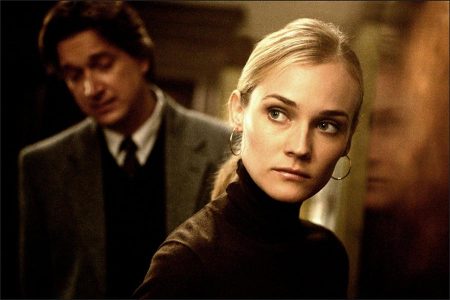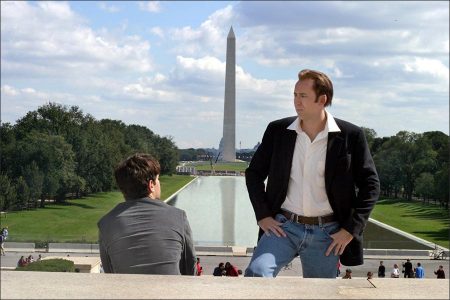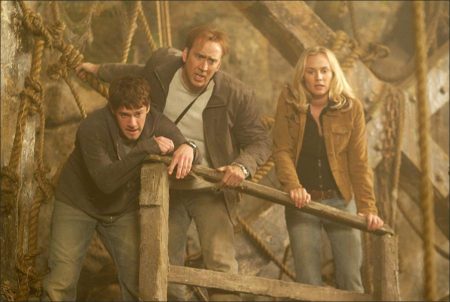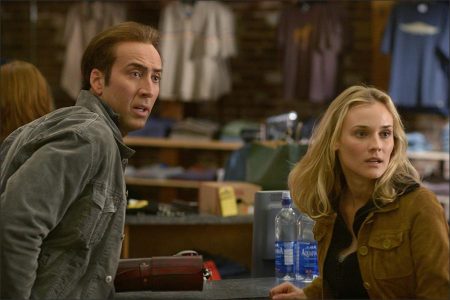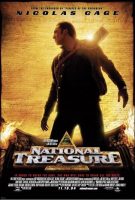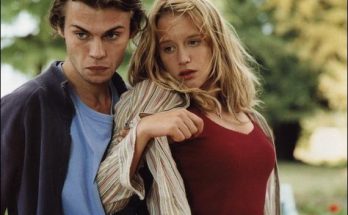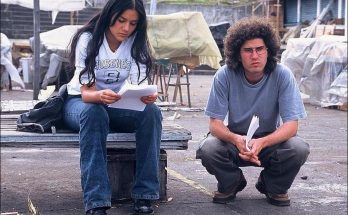In a race against time, enemies and the FBI, Gates teams together with his tech-whiz friend Riley (Justin Bartha) and the alluring, but unwitting, National Archives conservator Abigail Chase (Diane Kruger) to accomplish the unthinkable. Will they succeed in pulling off one of the most ambitious heists of all time? Will the Declaration of Independence lead Ben closer to the treasure? In one twisting, turning cliffhanger after another — from the ventilation shafts of the National Rotunda to the catacombs beneath New York City – the answers are revealed as Ben Gates unlocks the mystery behind America’s greatest National Treasure.
“I have always wanted to make a smart treasure hunt movie filled with secret codes, puzzles, heroes, villains and plenty of twists,” says producer Jerry Bruckheimer. “Everyone loves a good mystery- and this one is especially exciting because it is steeped in real American history. When you add to that the audacious idea of planning a heist to steal the Declaration of Independence, the fun really begins.”
“The idea of a treasure map being hidden on the back of the Declaration of Independence really excited me,” adds director Jon Turteltaub. “Usually, in a treasure hunt movie, the trick is how the hunter gets to the treasure. But in this film, part of the fun is how Nicolas Cage gets to the map and then keeps the map protected because it’s so invaluable even without the treasure. So all of that combined instantly said to me: there’s adventure here, there’s a caper here, there are characters who have to be clever and savvy, and it became even more thrilling.”
The Search For Clues Begins
Behind the non-stop mystery and adventure of National Treasure lies the inspiration of actual historical legends. From real historical rumors about the Knights Templar Treasure to secret codes actually used by America’s Founding Fathers to the mystical Masonic symbols that you can find on the U.S. dollar bill, the movie is filled with authentic intrigue.
Bringing this dose of reality to National Treasure’s fictional adventures was key for producer Jerry Bruckheimer, who is known for consistently taking action and drama to the next level with each of his films.
“When you make a treasure hunt movie, I think the clues that lead you forward have to be really smart and based on true history, which is what we did with National Treasure,” Bruckheimer says. “We take simple things, like the dollar bill, which is something you use every day but never really look at, and we reveal secrets that are hidden in it. After you see this film, you’ll look at the dollar in a whole new way. “
Adds Jon Turteltaub: “While our story is fiction, it constantly incorporates elements of reality. The story’s clues emerge from actual historical letters and monuments everyone knows; and the inventions are based on real ideas and things that truly existed. This makes the story even more fun for audiences, as they share in the mystery.”
The story of National Treasure began with an idea from Oren Aviv, who also serves as President of Buena Vista Picture Marketing, and his creative partner, Charles Segars. They initially came up with the concept of a man who is forced to steal the Declaration of Independence when the crucial U.S. document proves to be in dire danger after it is discovered to contain a secret treasure map.
“It would be one of the most audacious heists ever attempted – and one that we felt could be the basis of a smart, original action-adventure,” says Aviv. Adds Segars: “The more we began to explore the idea, the more exciting it became. We were not only trying to figure how a thief might steal the Declaration of Independence without destroying it, but also more about the treasure map it contained. We began to imagine where the treasure came from, why was it buried, and the ways it had been hidden over the centuries.”
Aviv and Segars brought the idea to director Jon Turteltaub and his producing partner Christina Steinberg at Junction Entertainment. Jon and Christina then hired Jim Kouf to write an original script based on the idea in 1998. Says Steinberg: “It was very exciting to watch the idea of stealing the Declaration of Independence evolve and become an even bigger and more broadly appealing adventure story.”
Meanwhile, Turteltaub’s involvement only increased Jerry Bruckheimer’s interest in shepherding the project. “Jon Turteltaub is a director we’ve been trying to work with for a number of years,” notes Bruckheimer. “He’s got a great sense of humor and a wonderful human touch, and because we knew this film would rely so much on comedy and fun, I thought he was the perfect individual to direct it.”
The idea quickly caught fire at Bruckheimer Films. “It’s been awhile since we’ve seen a film about a quest for mysterious treasure,” says executive producer Mike Stenson, “and we felt this film really updates the genre by introducing a new breed of treasure hunter – a maverick and romantic hero who has to commit the boldest possible crime in order to do the right thing.”
Screenwriter Jim Kouf began to expand even further on the film’s story. “When I met with Jon Turteltaub, he was thrilled by the idea of a guy stealing the Declaration of Independence and the moral dilemmas that would present to the character,” he recalls. “I spent a long time working on the script – 9 or 10 months of doing lots of research on the Declaration of Independence and the legends that surround treasure hunting in America. We took a lot of historical events and played with them, building on what might have been or what could have been.”
Screenwriters Cormac and Marianne Wibberley were also brought in to add further layers of mystery and adventure to the tale – spiked with spirited humor and contemporary romance. In their research, the screenwriters came across one of the most legend-filled and sought-after treasure troves in history: The Knights Templar Treasure. The Knights Templar were 11th Century Crusaders rumored to have also been one of the most powerful secret organizations in history. Stationed at Jerusalem’s Temple of Solomon, the Knights were said to have amassed perhaps the most enormous collection of treasures and religious artifacts ever – priceless items dating from Ancient Egypt all the way through Early Christianity. This tight-lipped band of warriors was supposedly so wealthy they were even sought after by Europe’s most powerful Kings for loans.
Then, in the 14th Century, their riches quite suddenly vanished without a trace. To this day, the mystery of what happened to the Knights Templar Treasure persists and continues to inspire treasure hunters around the world… especially in the United States. “Many people believe the treasure came to North America,” notes Cormac. “Intriguingly, it has also been supposed that Christopher Columbus was a Templar Knight, so that might have been a way for the treasure to get to here originally.”
If such an extraordinary treasure eventually landed in the hands of America’s Founding Fathers, it seemed likely to the Wibberleys that it would have been set aside for a “war chest” during the Revolutionary War – as a last resort should the fledgling nation need further financing (a serious issue at the time) to gain its hard-fought freedom.
Reading further into history, it also seemed entirely plausible to the Wibberleys that the Founding Fathers would go to ingenious lengths to keep such an incredible trove of wealth secret. After all, in 1776 America, spies and enemies were a constant reality – and secrecy was becoming an art form.
Indeed, as the screenwriters of National Treasure discovered, this was a time when many of the country’s elite belonged to secret societies, when letters were regularly written in hard-to-break codes and invisible ink, when cryptic Masonic symbols were carved into buildings and when treasures were commonly hidden in camouflaged locations to assure security. It was also a time when many American leaders belonged to a secret society steeped in mysterious rituals: the Freemasons.
“What we really found amazing is that the Knights Templar later evolved into Freemasons and many of America’s Founding Fathers were also Freemasons, including Benjamin Franklin and George Washington,” Marianne continues. “Of course, we don’t know if the Founding Fathers really knew of the Knights Templar Treasure but we do know that there have been famous hunts for it in North America, some involving such people as a young Franklin Delano Roosevelt.”
The screenwriters also found themselves fascinated by the real Benjamin Franklin, whose genius for invention gives his namesake Ben Gates several clever ways to decipher clues. Franklin did indeed invent bifocal glasses, so it was a logical jump to have the great American leave behind a pair of tri-color, code-busting specs of his own design. In addition, the real-life “Silence Dogood Letters” – letters written to an Early American newspapers by a middle-aged woman, only for historians to realize that a teenaged Ben Franklin secretly wrote them as a prank – also play a key role in the hunt for treasure.
To further add verisimilitude to the script, the filmmakers also consulted with real-life treasure hunters, who regularly brave dangers in the hopes of getting to the bottom of unsolved mysteries, to better understand their mindset. They also conferred with highly regarded cryptographers and code breakers to help design some of the puzzles Ben Gates must solve.
Key to one of the film’s most breath-taking sequences, Bruckheimer brought in criminal strategy experts to help formulate a realistic plan for stealing the Declaration of Independence. On display at the National Archives in Washington D.C., the original parchment Declaration is today protected by the most technologically advanced and extreme security measures available. “We went to people who have inside knowledge of complex heists and asked them, `how would it be possible to break into a completely secure building that was designed to outsmart thieves?’ and we built on their ideas to create a very real and suspenseful sequence,” he explains.
Among those consulted on criminal strategy for the film were legendary DEA agent Don Ferrarone, who was involved in the famed “French Connection” case and is now a movie producer and Harry Humphries, former Navy SEAL and technical consultant for many Bruckheimer Films.
The final screenplay combined all of these elements. Sums ups Jon Turteltaub: “What I loved about the final script is that it was filled not only with very smart action and a surprising amount of humor, but also terrific characters. Ben Gates is someone who feels a strong, personal connection to history and this is what ultimately gives him the courage to go to the outrageous lengths he does to protect the Declaration of Independence by stealing it and to search for a treasure whose worth to humankind is beyond price.”
Most of all Turteltaub loved the film’s unique blending of genres. “I love caper movies, I love smart characters, I love adventure, I love romantic comedy and with this film, all of that is happening in one movie,” says the director.
The chance to collaborate with Bruckheimer was another incentive for Turteltaub. “The name Jerry Bruckheimer right away says that this movie is going to be big, it’s going to be fun and it’s going to be filled with excitement,” comments the director. “What’s also wonderful about Jerry is that he was constantly pushing to deepen the characters, to do more research, to really heighten the reality of the plot to make it even more believable, and therefore full of mystery and suspense. He always saw it as an adventure story that is driven by the characters and by imagination.”
“In making National Treasure, I came to see how much Jerry really believes in good, old-fashioned storytelling,” sums up Turteltaub. “He has a very American sensibility in that he believes in true, pure heroes. His heroes might be flawed and quirky, but they are always driven by goodness – and that’s what we hoped to create with Ben Gates, who comes to understand that like our American forefathers, he must commit a crime and set off on an unknown adventure to do the right thing.”
National Treasure (2004)
Directed by: Jon Turteltaub
Starring: Nicolas Cage, Diane Kruger, Harvey Keitel, Justin Bartha, Sean Bean, Jon Voight, Harvey Keitel, Christopher Plummer, Oleg Taktarov, Annie Parisse, Armando Riesco
Screenplay by: Terry Rossio, Ted Elliot, Marianne Wibberley
Production Design by: Norris Spencer
Cinematography by: Caleb Deschanel
Film Editing by: William Goldenberg
Costume Design by: Judianna Makovsky
Set Decoration by: Anne D. McCulley
Art Direction by: Geoff Hubbard, Lawrence A. Hubbs
Music by: Trevor Rabin
MPAA Rating: PG for action violence and some scary images.
Distributed by: Buena Vista Pictures
Release Date: November 19, 2004
Visits: 109
